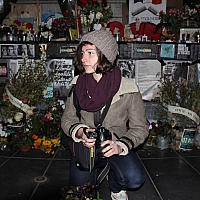
© Ursula Schulz-Dornburg
.jpg)
© Ursula Schulz-Dornburg
Though the site was in use as recently as 1989, Schulz-Dornburg’s photographs historically distance the place, rendering it as an eerie echo of similar locations in the American West. The same might also be said of Schulz-Dornburg’s photographs of the abandoned Hejaz Railroad in Saudi Arabia. Photographed in 2002 and 2003, from Medina to the Jordan Border, the series depicts the scant remnants of the Hejaz Railway line that was originally built to link Constantinople (presently Istanbul) to the Ottoman Empire’s Arab provinces. Constructed in the years prior to the First World War, the remnants of the railway mirror the 19th century American sense of Manifest Destiny.
.jpg)
© Ursula Schulz-Dornburg
For all her fascination with modernity, Schulz-Dornburg’s camera is equally at home in a more distant past. In her Sonnenstand series, made in 1991, the photographer chose as her subject a number of medieval chapels in Spain. The set featured in Bricks and Mortals was taken at Santa Maria de Melque, an 8th century chapel on the outskirts of Toledo. In order to express the experience and structure of the place, Schulz-Dornburg pairs images of the interior with one of the exterior. In doing so, the photographer finds a material at the heart of both architecture and photography: light itself. She also presents the passage of time in the beams of light that act as a sundial. The chapels have in their Romanesque architecture Moorish formal references. For that reason, Schulz-Dornburg’s making of this work between the first and second Gulf Wars is particularly poignant.
.jpg)
© Ursula Schulz-Dornburg
.jpg)
© Ursula Schulz-Dornburg


